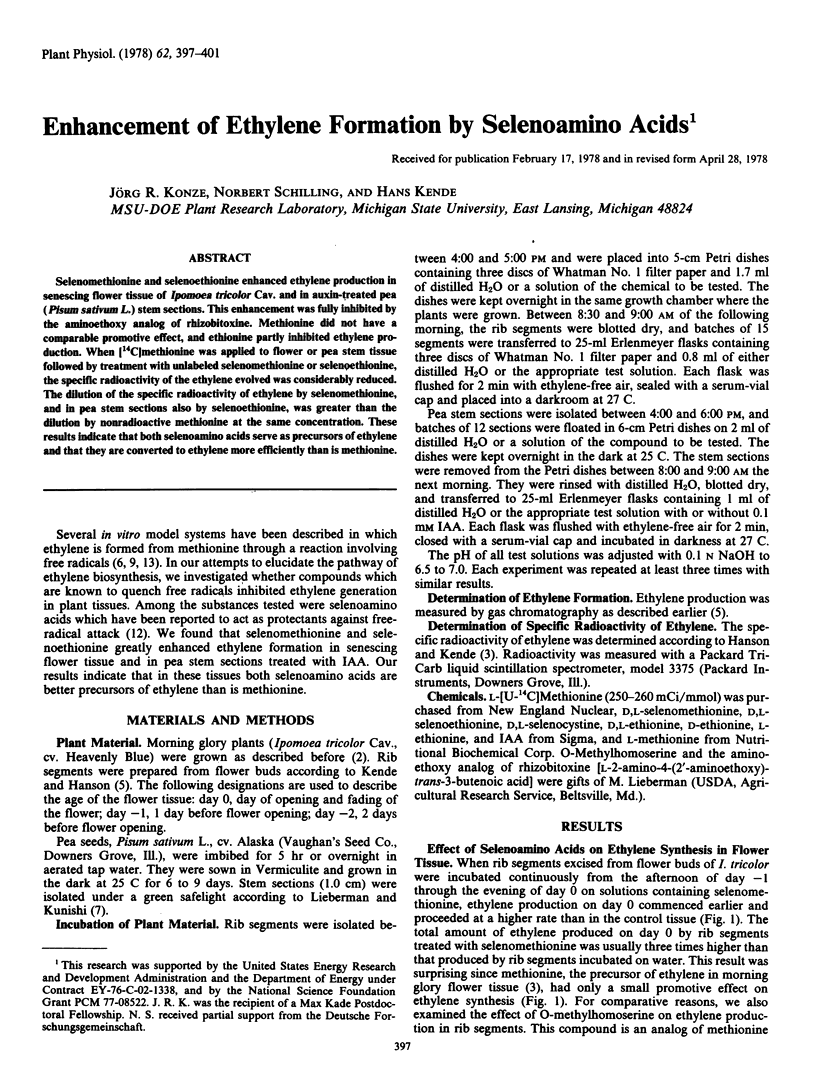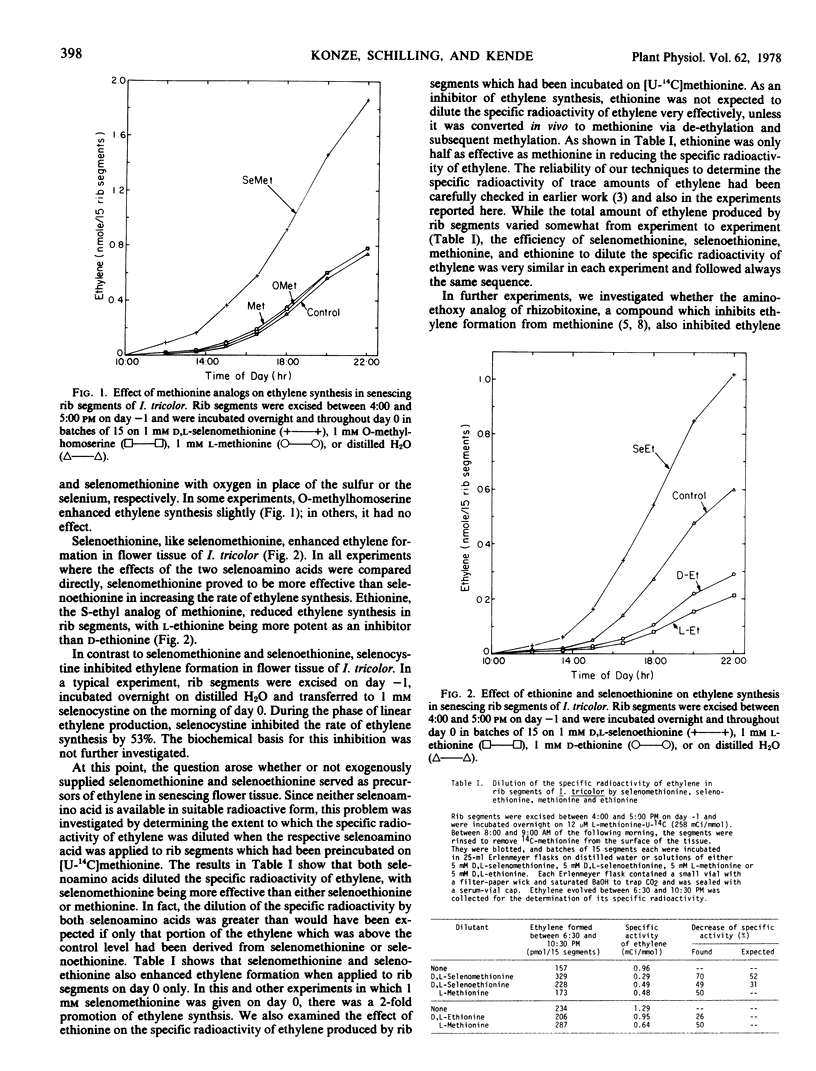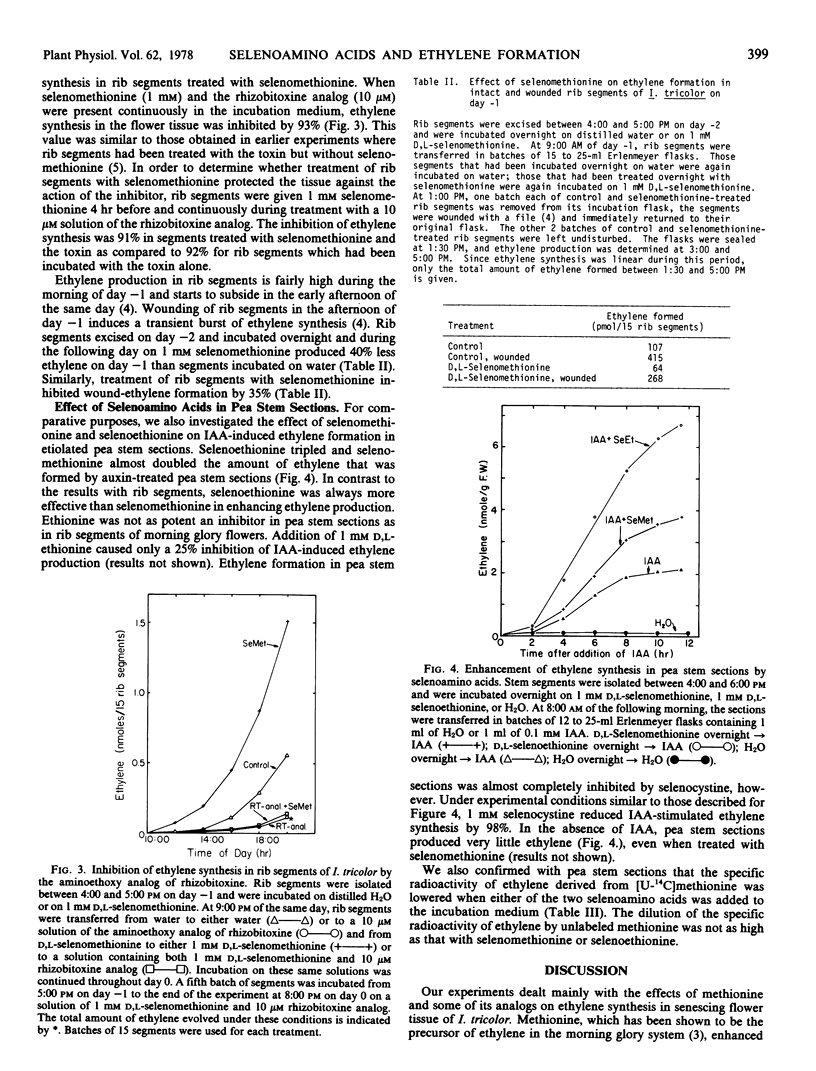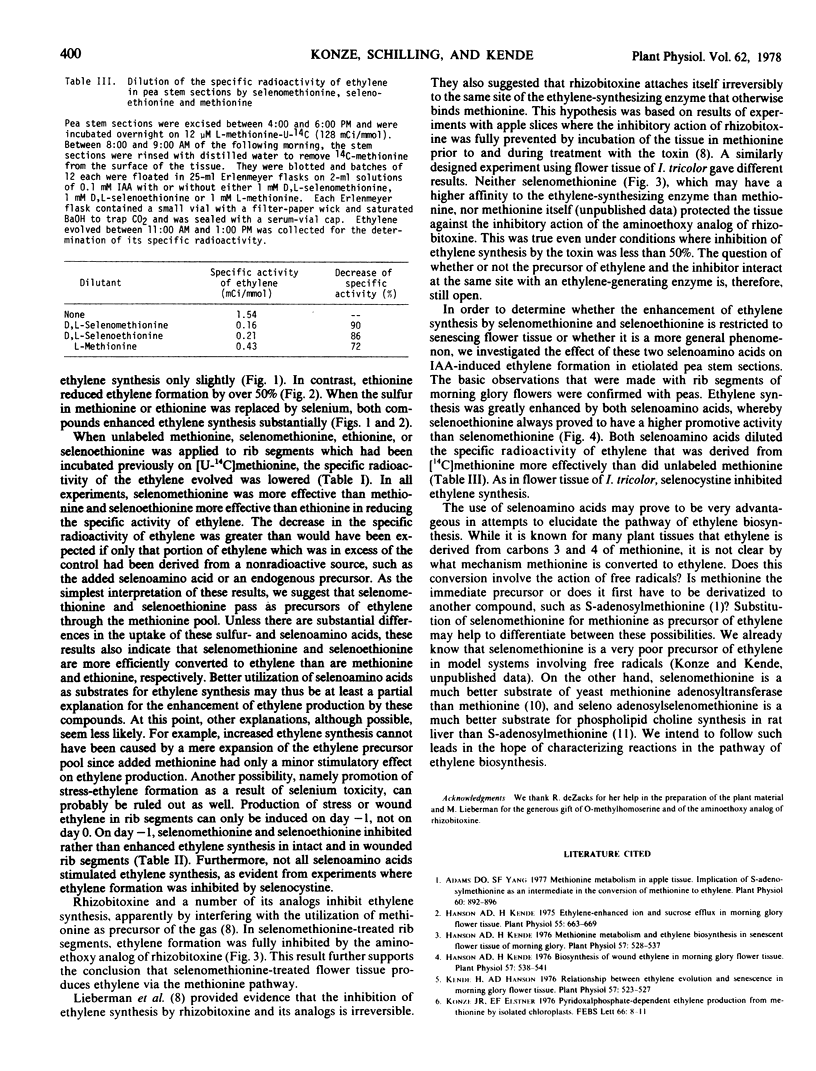Abstract
Selenomethionine and selenoethionine enhanced ethylene production in senescing flower tissue of Ipomoea tricolor Cav. and in auxin-treated pea (Pisum sativum L.) stem sections. This enhancement was fully inhibited by the aminoethoxy analog of rhizobitoxine. Methionine did not have a comparable promotive effect, and ethionine partly inhibited ethylene production. When [14C]methionine was applied to flower or pea stem tissue followed by treatment with unlabeled selenomethionine or selenoethionine, the specific radioactivity of the ethylene evolved was considerably reduced. The dilution of the specific radioactivity of ethylene by selenomethionine, and in pea stem sections also by selenoethionine, was greater than the dilution by nonradioactive methionine at the same concentration. These results indicate that both selenoamino acids serve as precursors of ethylene and that they are converted to ethylene more efficiently than is methionine.
Full text
PDF




Selected References
These references are in PubMed. This may not be the complete list of references from this article.
- Adams D. O., Yang S. F. Methionine metabolism in apple tissue: implication of s-adenosylmethionine as an intermediate in the conversion of methionine to ethylene. Plant Physiol. 1977 Dec;60(6):892–896. doi: 10.1104/pp.60.6.892. [DOI] [PMC free article] [PubMed] [Google Scholar]
- Hanson A. D., Kende H. Biosynthesis of wound ethylene in morning-glory flower tissue. Plant Physiol. 1976 Apr;57(4):538–541. doi: 10.1104/pp.57.4.538. [DOI] [PMC free article] [PubMed] [Google Scholar]
- Hanson A. D., Kende H. Ethylene-enhanced Ion and Sucrose Efflux in Morning Glory Flower Tissue. Plant Physiol. 1975 Apr;55(4):663–669. doi: 10.1104/pp.55.4.663. [DOI] [PMC free article] [PubMed] [Google Scholar]
- Hanson A. D., Kende H. Methionine metabolism and ethylene biosynthesis in senescent flower tissue of morning-glory. Plant Physiol. 1976 Apr;57(4):528–537. doi: 10.1104/pp.57.4.528. [DOI] [PMC free article] [PubMed] [Google Scholar]
- Kende H., Hanson A. D. Relationship between Ethylene Evolution and Senescence in Morning-Glory Flower Tissue. Plant Physiol. 1976 Apr;57(4):523–527. doi: 10.1104/pp.57.4.523. [DOI] [PMC free article] [PubMed] [Google Scholar]
- PAN F., NATORI Y., TARVER H. STUDIES ON SELENIUM COMPOUNDS. II. METABOLISM OF SELENOMETHIONINE AND SELENOETHIONINE IN RATS. Biochim Biophys Acta. 1964 Dec 9;93:521–525. [PubMed] [Google Scholar]


